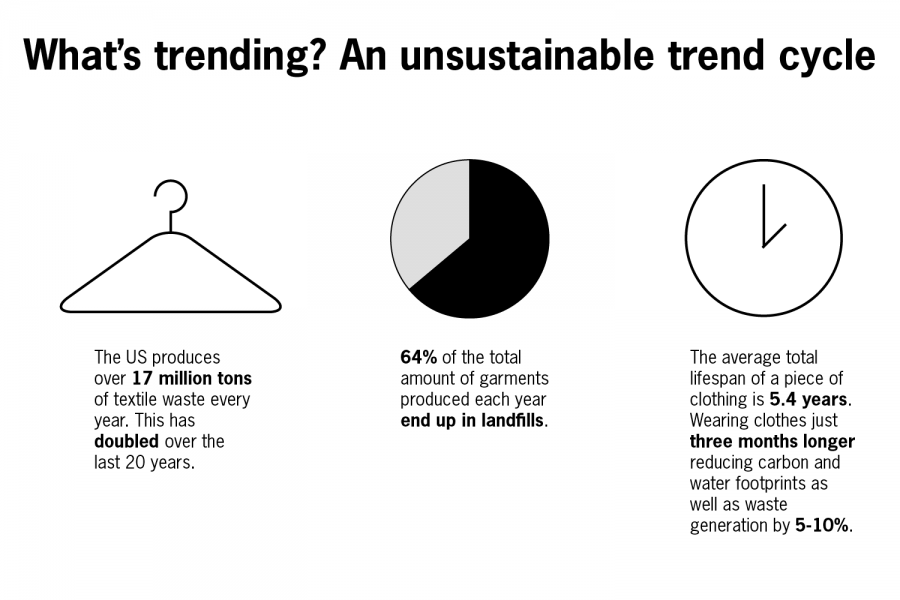Students find personal style by balancing trends and sustainability
November 29, 2021
When Jaycee Jamison goes shopping, she challenges herself to find five purposes for any clothing item or accessory that catches her eye.
“There shouldn’t be a reason that (the item) ever has to leave your wardrobe,” said Jamison, an advertising sophomore. “That’s one thing I’ve taken to heart.”
With the introduction of microtrends — fashion fads lasting mere weeks — on social media, the trend cycle encourages individual overconsumption and takes a negative toll on the environment. Part of the fashion counterculture focused on sustainability, individuality, retro aesthetics and diversity, UT students redefine the meaning of “on-trend.”
Jamison said she views social media as not only a way to make fashion more accessible but also as a starting point for personal style.
“What interests me is people that are able to take (trends) to another level and provide me something I haven’t seen splattered all over TikTok and Instagram,” Jamison said. “I want to see something that hasn’t been done before. Everyone has the ability to have a unique style because we’re all different, incredible human beings with that ability to like style within us.”
Learning how to make her own trendy knitwear, Jamison works toward sustainability by adopting slow fashion — people creating their own clothes.
“As long as people are wearing clothes, we’re always going to have trends,” Jamison said. “Seeing people do trends is exciting. It is something that constantly keeps you on your toes about fashion.”
To combat overconsumption, architectural engineering sophomore Galilea Gutierrez said she upcycles clothing by breathing new life into a garment.
“You can take old clothes that you don’t think are fashionable anymore and turn them into something else,” Gutierrez said.
Rather than follow a strict set of rules, Gutierrez said she allows her style to express her personality.
“My mom always says it’s not about what clothes you’re wearing, but how you wear them,” Gutierrez said. “It doesn’t really matter what you’re wearing, just that you’re comfortable enough to feel confident in it. Just because it’s not trending doesn’t mean it’s not fashionable.”
Economics junior Cecilia Guerra recommends starting a capsule wardrobe — a limited collection of fashion basics and staples meant to create multiple outfits from variations of the same few pieces.
“What I’ve noticed is that the people that look good (at UT), it’s not necessarily (that) they’re rocking fits or putting in a lot of time or effort,” Guerra said. “They just walk with a confident stride and you’re like, ‘Wow.’”
As diverse voices in the fashion world speak up online, Jamison said fashion will no longer remain reserved to a singular style, body type or budget. For Jamison, fashion trends, when balanced with sustainability, reflect a new, exciting way to celebrate personal style.
“I don’t think people ask themselves enough, ‘What do I like? What do I want to get out of my fashion? What do I want to show the world?’” Jamison said. “Because all fashion is, is just a way to show people who you are without talking.”












